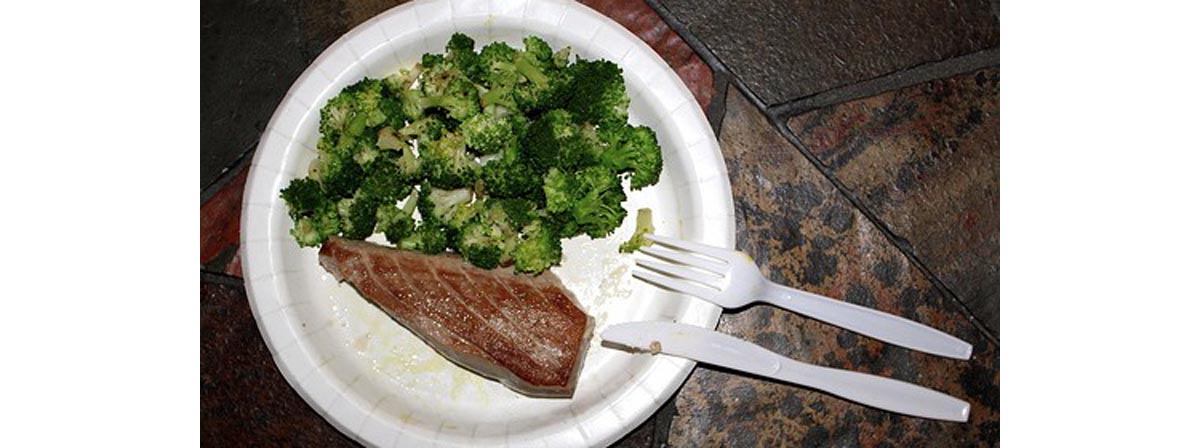Table of Contents
There are true believers in every diet who insist on following their diet plans literally, and insist that you do, too, but the paleo style of eating, whether or not it accurately reflects the way humans ate during pre-history, has a number of things going for it.

Here are 7 principles of good paleo diets that any dieters can put to good use.
1. There is no single list of foods that make up a paleo diet.
While it's safe to say that most or all of what our ancestors ate was "wild," the actual plants and animals they consumed would have varied from location to location, season to season, even day to day. Human beings have a wonderful ability to eat all kinds of foods, from Twinkies to hippopotamus, from endive to elephant. There is no reason to restrict one's diet to foods found at archaeological sites.
2. A sensible paleo diet would consider not-eating as well as eating.
In an era before grain silos, meat lockers, and jet transportation, it seems likely that our ancient ancestors went hungry from time to time. Humans actually do not starve easily. In fact, when we can't eat for short periods of time, up to 48 hours or so, our cells take advantage of the lull in incoming nutrients to go through a process called authophagy, a kind of cellular housekeeping that removes damaged organelles and damaged DNA and replaces them to keep the cell young. Likewise, it is much only possible for our bodies to burn fat when we aren't taking in excess calories. Having a brief period now and then when our bodies are "closed for repairs" isn't a bad thing.
3. The human body doesn't do all its own digestion.
Every healthy human being carries about 50 trillion bacteria, most of them in the lower digestive tract. Probiotic bacteria digest components of food that our own enzymes can't, and they share some of those nutrients with us. Probiotic bacteria are especially useful for helping us deal with the lactose sugar in milk, a food that true believers in older paleo diets avoid at all costs.
4. Human health isn't just a matter of genetics. It's also a matter of epigenetics.
Genes are like computer hardware. They carry the information that codes our human potential. But just as computer hardware isn't any good without computer software, the human genome is meaningless without the human epigenome, the totality of genes that are switched on or switched off due to experiences, thoughts, and encounters with the environment. Certain kinds of genetic potential, both good and bad, are activated in the modern world that could never have been activated in the prehistoric world.
5. We're pretty sure primitive people didn't have to deal with food additives, preservatives, coloring agents, taste modifiers, and plasticizers.
Many of the genes that protected our ancient ancestors against obesity are deactivated by exposure to modern chemicals. Dealing with chemical exposure may be as important as diet in reaching right weight.
6. Depending on food supply, ancient people probably were carnivores, or vegans, or maybe ate a mixed diet.
Humans can utilize all kinds of foods. We are designed to "run" on what's available. In the modern world, we are free to be vegans, if we feel we have an ethical imperative to avoid eating animals and their products, or we can be carnivores, if we can afford the trip to the meat counter, or we can eat a mixture of foods. There is no one approach to eating that is best for everyone. What's best for the world at large is another question.
7. Any diet, taken to extremes, can be injurious or even deadly to health.
Anthropologist Marlene Zuk recounts the possibly apocryphal story of German nutritionist August Engelhart who reasoned that:
- Humans descended from monkeys, and
- Monkeys ate coconuts, so
- Humans should eat coconuts.
In the story, which one hopes is not true, Englehart gathered a band of disciples to move to a South Pacific atoll where they would only eat coconuts, decreeing punishment and torture for anyone on the island who dared to eat anything other than coconuts. When the island was captured by a British navy expedition in World War I, only Engelhart was still alive, his legs and torso swollen by starvation and his skin covered with sores. Engelhard died almost as soon as he was carried into the ship, despite the presence of abundant fish and shellfish in the lagoon that would have saved the colonists from starvation.
Use the paleo diet as a starting point, not as an end. Make the diet truly your own. And show tolerance for others who make other diets their own, people who like you follow their inner callings for health.
- 80beats (blog). The Stone Age Pyramid Included Flour Made from Wild Grains. Discover, 18 October 2010.
- Revedin, A. et al. Thirty Thousand-Year-Old Evidence of Plant Food Processing. Proceedings of the National Academy of Sciences of the USA. 107 (2010). 18815-19.
- Photo courtesy of .craig by Flickr : www.flickr.com/photos/anabadili/3375488854/
- Photo courtesy of Jose Camões Silva by Flickr : www.flickr.com/photos/josecamoessilva/6577166629/


Your thoughts on this